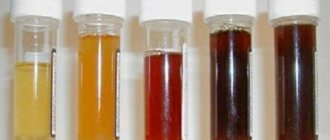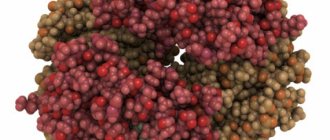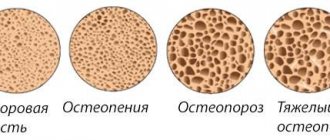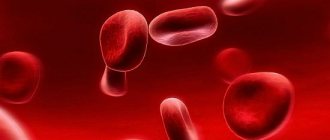Urine can tell a lot about a person's health. This is sometimes the only way for a child to find out about problems related to his health. Children themselves do not realize that there is something wrong with their body, and parents, overlooking this, often let the disease take its course.
An attentive parent will always check the child’s health if there is a strange color, smell or consistency of urine. Why does a baby need to be tested? It is extremely important for children to have their urine tested regularly to prevent complications. Receiving a poor urine test indicates a number of complications in the child.
Types and purposes of analyzes
Why does bloody diarrhea occur in a child under one year old?
A general urine test is necessary to exclude or confirm pathologies in the kidneys and urinary system. It is also used to monitor the prescribed treatment, whether it is effective or requires adjustment.
There are special studies that are not carried out as planned, but are prescribed to determine the causes of bad urine in an infant, discovered during a general analysis:
- Urine according to Nechiporenko is examined when a deviation from normal values is noticed. The analysis helps to identify inflammation and identify diseases such as cystitis and pyelonephritis. It is also used when there is blood in the urine and a large number of leukocytes;
- Biochemical analysis is needed to diagnose the functioning of the pancreas and detect endocrine disorders in infants. It determines the presence of enzymes, hormones, amino acids, creatinine and other important indicators in the urine;
- A microbiological examination will determine whether there is a pathological microflora, in particular fungi and bacteria. At the same time, resistance to antibiotics is determined. This is required when the prescribed treatment does not lead to positive results;
- Sulkovich's test is prescribed if there is a suspicion of rickets, and it is also necessary to monitor the therapy being carried out. The test determines the calcium content in the urine. This can be found out from the results of biochemical analysis; the Sulkovich test is rarely used;
- Analysis according to Zimnitsky is very difficult to collect in infants. It is necessary when there is a suspicion of diabetes mellitus, pyelonephritis, renal failure;
- The Rehberg test monitors the functioning of the kidneys and their cleansing ability. The analysis is prescribed for children with diseases of the thyroid gland and adrenal glands.
Each analysis has its own characteristics, which need to be clarified with a pediatrician. For example, when researching according to Zimnitsky, you need to prepare 8 containers that are filled every 3 hours.
How to improve nutrition tests
Only a healthy person can pass a good urine test. With small changes, urine production can be adjusted to improve performance.
- Change your diet.
- Adjust the quantity and quality of the liquid.
- Change physical activity.
- Take vitamin complexes.
If, after improvement, urine analysis shows a poor result, this indicates the beginning of a pathological process.
The child's diet should be balanced
Daily absorption of proteins, carbohydrates and fats should be normal. Insufficient absorption of protein in the human body leads to a shift in the acid-base balance in the body.
The normal fluid intake for a person is 2 liters per day. This includes drinking tea and coffee. Coffee has a diuretic effect. It is better to use water and decoctions. Dried fruit drinks have a beneficial effect on the body. Lemon water establishes the necessary acid-base balance. Abuse of mineral water is contraindicated. Its content has different effects on the body.
Limit the consumption of beets and carrots, they can color your urine orange and reddish. Stop taking diuretics. The study requires urine that has been in the body for more than 4 hours. Poor tests in a child do not always indicate a disease; this can only be determined by a doctor.
Possible reasons for poor results
Why can bleeding come from the ear of a child under one year old when cleaning?
If, according to the test results, a child has bad urine, he is not necessarily sick. The results may be affected by errors in collecting the material.
Note! Lack of sterility will ruin the study. This happens, for example, if urine was poured into a container from a dirty pot or a poorly washed jar was used. Perhaps it was not closed tightly, which will also negatively affect the result.
It is worth purchasing a special sterile container for testing. There is no need to wash it before collecting, just remove it from the bag and begin the procedure.
Urine collection containers
A bad urine test in a child is not a reason to panic. Research is always carried out in a comprehensive manner. It is impossible to judge the presence or absence of a disease based on only one of them.
If a child has bad urine, the reasons can be explained by knowing the values of the main indicators:
- A large amount of protein indicates an inflammatory process in the kidneys, bladder or ureter;
- High values of leukocytes usually confirm pyelonephritis, cystitis. Often one disease provokes another. So, with cystitis, the infection rises, affecting the kidneys;
- The presence of ketone bodies indicates poor nutrition, lack of enzymes and glucose. They appear with dehydration and starvation, as well as the presence of infection in the gastrointestinal tract;
- Increased acidity indicates chronic renal failure. The disease may be the result of endocrine disorders or a consequence of pyelonephritis. The kidneys cannot work at full capacity, ensuring cleansing of the body;
- An acidity value below normal indicates changes in the concentration of potassium in the blood. This situation is considered quite dangerous; it can lead not only to kidney problems, but also affect the functioning of the cardiovascular system.
Pathology can be indicated not only by various indicators, but also by external characteristics:
- Dark urine appears when there is a malfunction of the liver, toxic poisoning, or diseases of the circulatory system;
- A red color may occur when taking certain medications. Blood in the urine indicates the development of pyelonephritis, urolithiasis of the bladder;
- Cloudy urine confirms inflammation. It is usually transparent, regardless of color.
In any case, only a doctor can make a correct diagnosis. If necessary, he will prescribe repeated tests or examinations to get a more complete picture. Only a doctor can decide whether a child needs antibiotics or other medications. After all, potent drugs can negatively affect the infant’s still fragile body, so you need to act based on the opinion of a specialist.
Mandatory medical examination
In what cases is a poor analysis a warning sign?
However, the following factors should cause some concern:
- the collection of biomaterial was carried out according to the rules;
- re-analysis revealed similar deviations;
- on the eve of the study, the child had contact with a sick person;
- the baby behaves restlessly;
- the reason for the test was complaints of malaise;
- the child has an elevated body temperature, vomiting and diarrhea, and other symptoms of disease;
- According to the results of the analysis of other biomaterial, deviations were also identified.
How to properly collect urine
Vomiting blood in a child under one year old - symptoms of nausea
The result of the analysis depends on the correctness of urine collection. Usually morning urine is needed, you need to be ready when the child wakes up. You will need a sterile container with a tight-fitting lid. When using plates, cups, or pots, they must also be washed well.
Note! Some medications and foods may affect your results. In particular, carrots and beets can change the color of urine. Therefore, it is important to exclude these foods and consult with your doctor about the possibility of suspending therapy.
The best ways for boys and girls
It is most convenient to collect material for analysis using a urine collector. Infants cannot control the process, so parents do not always have time to place the jar at the right time. Urine collectors are sold in pharmacies and are available for both boys and girls:
- You need to peel off and remove the protective strips;
- Glue the device to the baby's skin;
- Make sure that it does not toss and turn, otherwise all the contents will spill out and the procedure will have to be repeated;
- Before collecting the analysis, you need to wash the child. For girls, it is important that the water flows backwards. This will prevent microorganisms from entering the genital tract. It is always necessary to wash it this way, not only before taking the test.
Urinal
Getting a boy to pee in a jar is much easier. Children usually do this when their diaper is removed. All that remains is to substitute a sterile container. There is no need to fill it completely; even a fifth of a standard jar will be enough. With girls it’s a little more difficult, but you can put a saucer under your butt, which must be clean. After the baby goes to the toilet, pour the contents into a special jar.
As they approach the age of one year, some babies begin to be potty trained; this greatly simplifies the process of collecting tests. The main thing is to wash the baby's bedpan before use, after which all that remains is to pour the urine.
Additional Information. To get your baby to pee, you can offer him water or place a warm, wet diaper on his lower abdomen. It is allowed to apply light pressure on the bladder area. The process is stimulated by bubbling water; sometimes it’s enough to go into the bath and open the tap.
When to see a doctor with problems
To prevent pathologies, parents should closely monitor changes in the child’s fluid secretions. If there is a change in color, smell or if there is sediment, you should consult a doctor. These are the first signs of an inflammatory process in the baby. Changes in behavior, complaints of pain in the lower abdomen and temperature, indicate a disease of the renal system.
Parents can independently feel, by feeling the child, bloating, his reaction to pain in the kidney area. Such symptoms indicate a malpositioned kidney or a full bladder. You need to contact a pediatric urologist.
What to do if the tests are bad
If a baby has a bad urine test, this does not mean that he is seriously ill. Perhaps an error was made during the collection of material or its research. The doctor always prescribes a repeat general analysis, supplemented by a biochemical one. If the situation repeats, the baby is sent for an ultrasound of the kidneys.
Kidney ultrasound
Only after a complete examination will the doctor make a diagnosis and prescribe treatment. If a dangerous pathology is detected, the baby will be hospitalized. You cannot refuse treatment, because infections in infants develop rapidly, so it is better to be under the supervision of medical personnel.
In the future, you need to monitor your indicators by donating urine not every month, but after a serious cold or acute respiratory viral infection. The infectious agents remain in the body even after symptoms disappear and can again provoke kidney inflammation.
Children often have to undergo a urine test. It is necessary to approach the study responsibly, follow the rules of hygiene and use only sterile containers. Proper preparation of the material is the key to a reliable result necessary for treatment.
Physical characteristics of children's urine
If you compare the color of children's and adult urine, the former will be distinguished by a lighter, subtle color.
The reasons for this lie in the nutritional characteristics of a child under one year old. As they grow older and switch to a mixed type of diet, the secreted biological fluid acquires a more intense color, up to the traditional yellow-straw color. After eating foods that have a bright pigment (beets, carrots, oranges), the child’s urine may briefly turn into corresponding colors. Children's urine remains clear for several hours after collection. Later, a small foggy cloud may form in its thickness, which over time can occupy the entire volume of urine. Such turbidity indicates the presence of leukocytes in the urine, which indicates the development of inflammation, or an increased salt content.
There is a simple and reliable way to identify such turbidity. To do this, you need to heat a portion of urine in a water bath. If the whitishness persists, it is caused by the presence of leukocytes. If, after heating, the urine becomes clear again, then oxalate salts are the source of concern. If the turbidity has become even more intense, then it is due to phosphate salts.
Children's urine has little or no odor. As the child's diet is replenished with protein and fatty foods, his urine increasingly acquires an ammonia odor, which intensifies significantly with prolonged contact with air.
Normally, the biological fluid secreted by a child has a neutral reaction or a slight shift towards the acidic side. If urine collection is done after eating, this contributes to its weak alkalization. Also, the reasons for this shift may be increased sweating or large consumption of fresh plant foods.
The density of urine in children immediately after birth does not exceed 1005 grams per liter and depends on the mother’s nutrition. By six months, this figure increases by five units, and by three years it reaches adults 1020 grams per liter.
Main indicators of general urine analysis
When performing a general clinical examination of urine, the following indicators are taken into account:
- color;
- degree of transparency;
- acidity;
- relative density;
- protein;
- red blood cells;
- leukocytes.
Color
Normal urine is yellow. The shade - from pale to bright - depends on the concentration and amount of substances dissolved in it. A change in this parameter may indicate pathology. But temporary disturbances are possible due to the use of certain foods or medications.
The following products can cause temporary coloration of urine:
Among the pathological processes that change the color of urine, the following are distinguished:
Newborns may have brick-colored urine in the first week of life. This happens due to a transitional state - uric acid infarction.
Transparency
This indicator depends on the concentration and type of solutes in the final urine. If there is no pathology, then transparency is complete.
Bacteria in sediment can cause cloudy urine. It also occurs in the following conditions:
- pyelonephritis;
- salt;
- proteinuria;
- inflammation of the genitourinary tract;
- hematuria;
- diabetes;
- cylindruria.
Acidity
Depending on the presence or absence of substances that neutralize the acidic reaction of urine, a pH shift in one direction or another is determined. This is a dynamic indicator. It largely depends on the nature of the food consumed and the drinking regime.
An acid reaction accompanies the following conditions:
- renal failure;
- allergy;
- diabetes;
- kidney tuberculosis;
- diet errors.
Alkalinization of urine is the result of the following processes:
- persistent vomiting of acidic stomach contents;
- drinking plenty of alkaline solutions;
- increased acidity of gastric juice;
- resorption of edema;
- urinary system infections.
Density
The normal relative density is 1.012-1.020 and can vary during the day. This indicator determines the concentration of substances dissolved in the urine.
The reasons for the increase in specific gravity are
- dehydration;
- severe proteinuria;
- oliguria of various origins;
- diabetes;
- kidney failure;
- swelling.
The relative density decreases under the following conditions:
- excess fluid intake;
- severe renal failure;
- convergence of edema;
- diabetes insipidus.
Among the physiological reasons for fluctuations in the specific gravity of urine are the amount and nature of food. The density of urine is also affected by the volume of fluid consumed and its loss through sweat.
Protein
With normal functioning of the renal system, protein in the urine is not detected or has negligible concentrations. Among the processes and conditions that cause proteinuria, the following are distinguished:
- glomerulonephritis;
- physiological kidney failure of a newborn;
- inflammation of the genital organs;
- pathology of the urinary tract;
- tubulopathy;
- kidney tuberculosis;
- heart failure;
- oncological transformations.
There are physiological causes of proteinuria, which is not a sign of pathological changes. For example, this indicator increases with excess protein intake from food, with hypothermia or overheating. Prolonged stay in an upright position in school-age children can also cause the appearance of protein in the urine.
Leukocytes
Leukocyturia is a sign of an inflammatory process. The presence of a small number of white blood cells (up to 10) in the field of view is acceptable.
True and false leukocyturia are distinguished. In the first case, the source of these elements is the urinary system: pathological changes due to inflammation of the kidney tissue, ureters, bladder and urethra. False leukocyturia is determined when leukocytes from foci of inflammation in the genital tract enter the urine.
Red blood cells
Red blood cells may be present in single quantities (in girls up to 10 in the field of vision). Many red blood cells are a sign of bleeding due to damage to the mucous membrane of the urinary system.
Like leukocyturia, true and false hematuria are distinguished. The first occurs with pyelo- and glomerulonephritis, tumors, tuberculosis, systemic diseases, hemoblastosis, urolithiasis, cystitis and urethritis.
False hematuria is diagnosed when menstrual blood enters the urine or damage to the genital organs.
There is also microhematuria - a condition when blood is detected only by microscopy. Macrohematuria is visible to the naked eye.
Reasons for poor analysis in children
Severe diseases of the urinary system cause changes in general analysis indicators. In a child in the first months of life, the culprit of pathological abnormalities may be pyelonephritis of various etiologies. In older children, poor test results are often caused by glomerulonephritis, kidney tuberculosis, and nephrolithiasis (stone formation).
But it often happens that the reasons for changes in indicators lie in a violation of the technique of collecting and preparing for the study. Eating a large amount of protein foods the day before the test can lead to false results. Can also provoke a bad result
- drinking too much on the eve of tests or lack of fluid;
- the presence in the diet of vegetables and fruits that color the biomaterial;
- the use of certain medications, herbal teas.
Reasons for poor analysis related to collection technique:
- non-sterile urine container;
- poor genital hygiene;
- contamination of the sample with feces;
- pouring urine from a child's potty into a container for analysis;
- squeezing urine out of films, panties, diapers or cotton wool.
Improper storage of the collected material affects the results of the study. If the container is left in a warm place for a long time (more than 12 hours), it will cause bacterial growth, salt precipitation and cell destruction.
Smell of urine in babies
You should also not ignore the smell of urine in a baby. Quite often, it is a change in smell that may indicate the development of various diseases or growing problems in a fragile body.
The norm is a weak odor with no characteristic specific trails. If there is a normal color and no turbidity, we can talk about quite good urine, which is not a harbinger of any troubles.
When the smell of urine in a baby takes on the specific smell of rotten apples, this is indirect evidence that the acetone has risen greatly. Immediate testing and establishment of an appropriate diagnosis is required. Initially, excess acetone originates in the liver, which means that it is at this moment that it is subject to the greatest irritation and is very sensitive to all kinds of aggressive influences.
Ketone bodies, which are the root cause of excessive acetone formation, do not appear on their own. Their abundant formation is facilitated by:
- constipation;
- strong physical activity;
- toxicity;
- gastritis;
- changing the diet and introducing new foods that are poorly absorbed by the body;
- hypothermia;
- acute infection occurring in the body;
- constant fatigue;
- overexcitement.
When there is an odor of ammonia in a baby's urine, cystitis is present. Bacteria contribute to the decomposition of urine even inside the bladder. As a result, severe inflammation develops in the urinary system, which must be removed with quick and proper drug treatment. As soon as the smell of urine in a baby has undergone significant changes and has become very pronounced, you should consult a doctor to restore normality.










